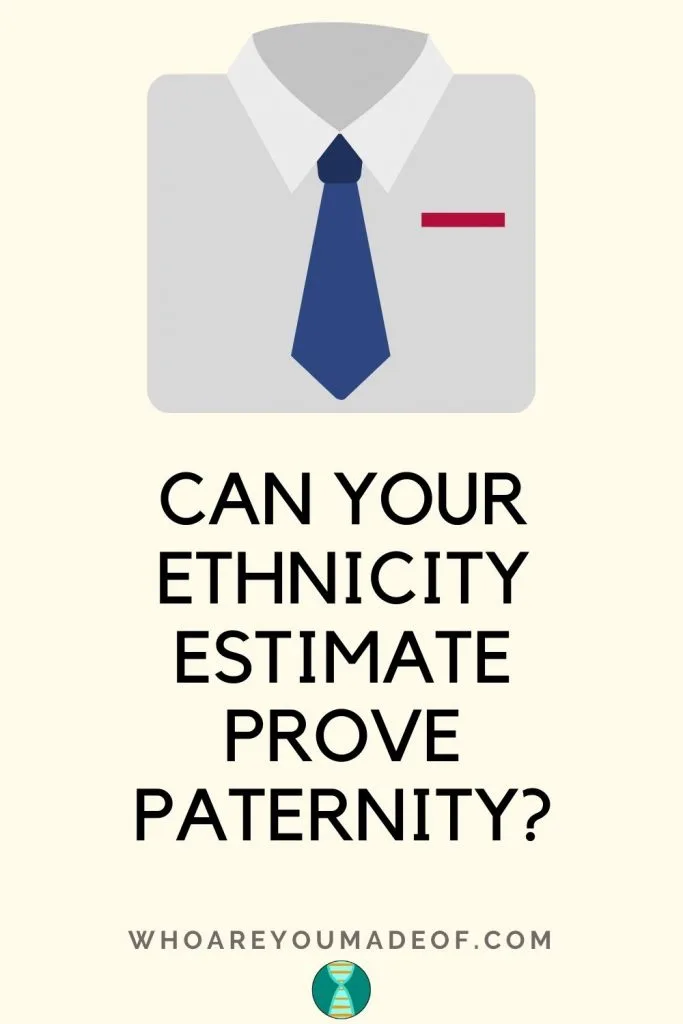Can you use your ethnicity estimate to prove paternity? In this post, I'll explain why your ethnicity estimate doesn't tell you much about who your parents are, and which information from your DNA results is most useful for this purpose.
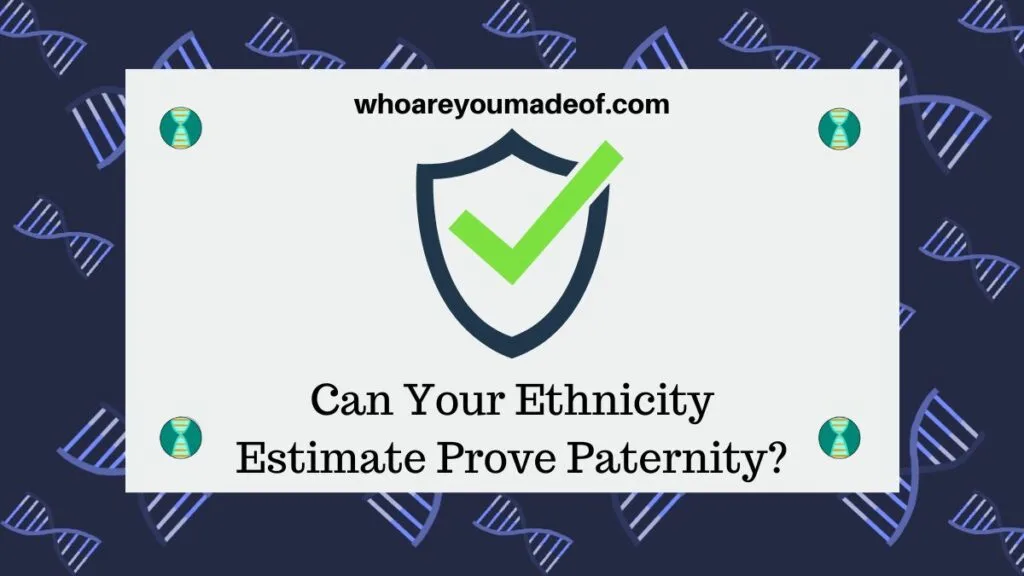
Once you've checked over your ethnicity estimate, you might find yourself comparing your results to those of your parents. Is it possible to use your ethnicity estimate to determine whether or not your parents are your parents?
Ethnicity estimates cannot prove parentage or paternity
If you and your parent have both done DNA testing, it's possible that a cursory comparison of your ethnicity results could lead you to question whether or not this person is really your biological parent. As it turns out, ethnicity estimates are not very useful in determining who our parents are, or even verifying our relationship to our parents (or any other relative, for that matter).
There are several reasons that a child's ethnicity estimate cannot be used to determine paternity:
- Ethnicity is not inherited in equal amounts. This means that it's possible to inherit all of one of a parent's ethnicity regions or only some of it
- It's possible to inherit absolutely none of your parent's DNA region, even if they have a relatively high percentage of that region
- It's possible that you inherited an ethnicity region from both of your parents, thus "blurring" a clear pattern of inheritance
- Each DNA ethnicity region that is reported on the estimate comes with an estimated percentage, but also includes a "range", meaning the actual amount of DNA from that region could fall anywhere within that range.
- If the two DNA tests were performed by a different testing company, the population samples used to make comparisons for ethnicity estimate purposes will be different, possibly leading to very different regions showing up on the different test results
- Occasionally, "recombination", the term used to describe the way genes from your parents were passed down to you, can shuffle genes around in a way that could make portions of your DNA "appear" as if they match DNA from a certain region from which neither of your parents have ancestry.
Example of a daughter's ethnicity estimate that doesn't seem to match her father's results
In order to demonstrate some of the above ideas about the way that ethnicity is inherited, I am going to show you my own Ancestry DNA results compared with my father's results. In this case, we both tested with the same company, which eliminates the explanation that any discrepancy between our estimates could be explained by different sample populations.
In the image below, you can see our side-by-side comparison. If you didn't know that we are father and daughter, and were trying to guess our relationship, you might think that we are 2nd-3rd cousins, or even unrelated!
Take a look yourself:
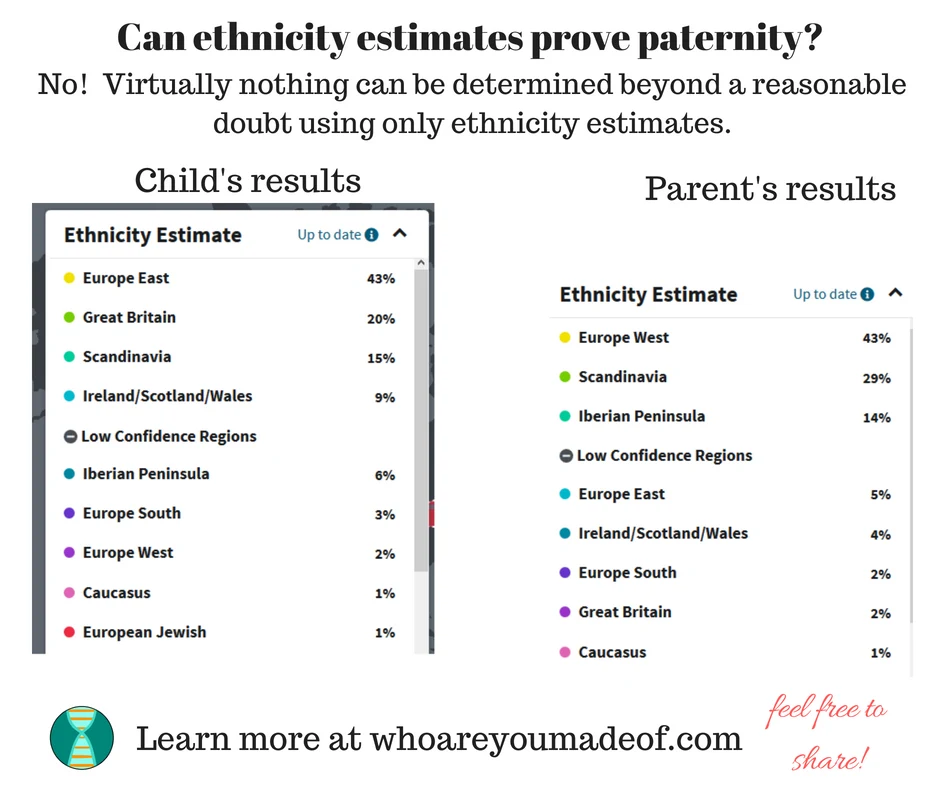
As you can see, my father's major DNA regions are Europe West, Scandinavia, and the Iberian Peninsula. I have only very small 2% trace percentage in my own results - very surprising compared to my dad's 43%.
I inherited about half of his other two regions (Scandinavia and Iberian Peninsula) and basically inherited all of his trace regions.
If you do the math, you might notice that the total of the ethnicity regions that I might have inherited from my father only equals about 35%. In the case of my DNA estimate compared with my father's results, the most probably explanation is that the estimated percentages are only an estimate, and that the actual amount of DNA that comes from any of the regions that I show could fall within the estimated range.
In order to access the estimated range, you have to click on the specific ethnicity. For example, if I want to see the range of Europe West DNA that I could possible have, it explains that I might have as much as 11% Europe West DNA.
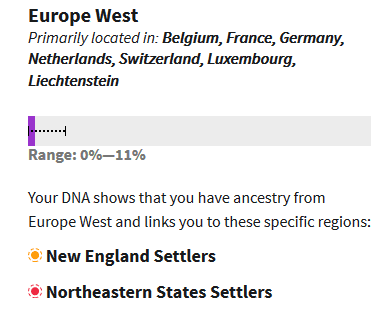
If I look at my dad's Europe West range, I can see that he could have as little as 9% and as much as 71% Europe West DNA:
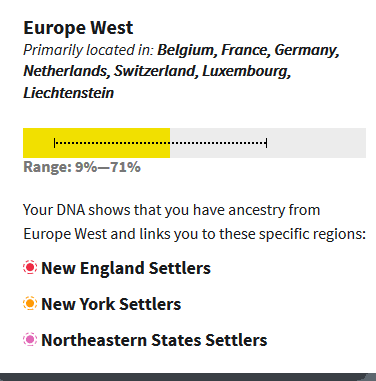
The only thing that my father and I can be sure of is that we really do have DNA that matches the Europe West region - but the exact percentage seems to be up for debate.
Only your DNA matches can "prove" who your parents are
Even though ethnicity estimates aren't useful in determining who your parents are, or even when your family tree is correct (in most cases), it doesn't mean that your DNA test was a waste of time and money.
Many people who do Ancestry DNA or other DNA tests don't know that they also get access to a huge list of DNA relatives, called "DNA Matches". DNA matches are people who share genetic material with us.
On our DNA match list we will find people listed in order from closest relationship to most distant relationship. Most relationship types will be "estimated", but when it comes to a parent/child relationship, DNA testing companies can be more specific.
If you have a parent who has tested with the same company, they will show up on your DNA match list as your parent.
Example of Parent/Child match on three different DNA testing sites
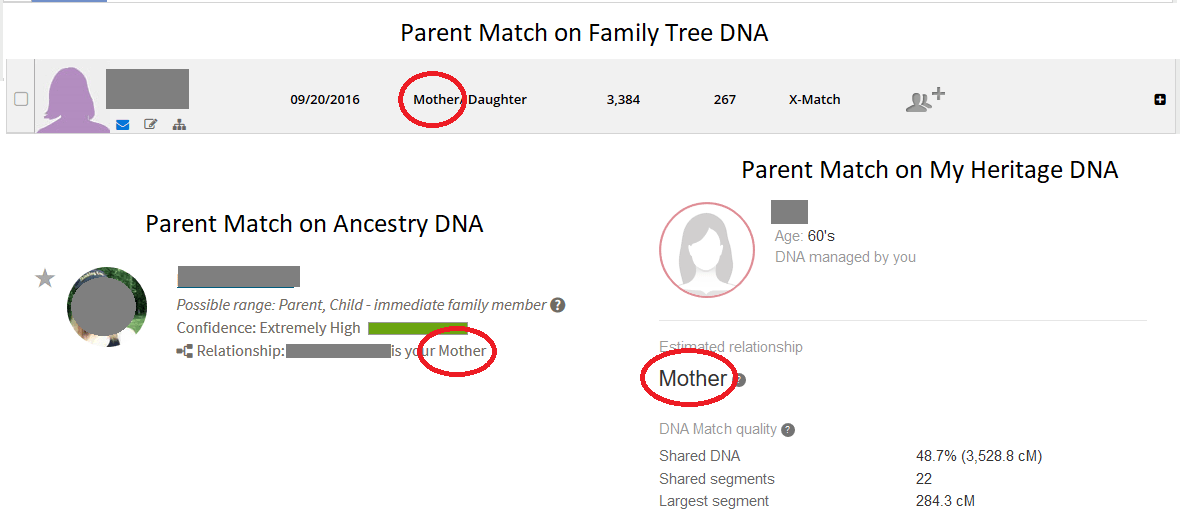
Even more important than what the DNA testing company says my relationship is with my mother, I can also look at the amount of shared DNA between my mother and I. In the image above, you can see that we share 48.7% of our DNA, or 3528 centimorgans (cMs).
Centimorgans are basically just a unit of measurement to describe length or distance in DNA, and we use this word when we are measuring shared DNA.
We generally share 50% of our DNA with each of our parents, and I probably share a little more than the 48.7% that is reported by My Heritage. The exact number doesn't really matter, however.
The amount of shared DNA is so high that no one except a child, an identical twin, or a parent could share this much DNA with me. (Read more about centimorgans and relationships in my post titled, "Beginners Guide to Shared Centimorgans")
Conclusion
To summarize, the most important aspect of your DNA results is your DNA match list. Our ethnicity estimates are a lot of fun and can give us a general idea about our most recent ancestry, but we can't use them to determine who our parents are, or whether or not our family tree is correct.
I hope you enjoyed this post. If you have any questions about something that you read here, or would like to add your experience with DNA testing, I would love to hear from you in the comments.
Thanks for stopping by!
